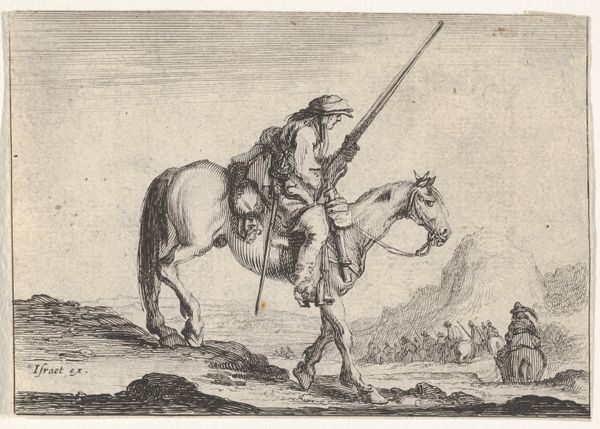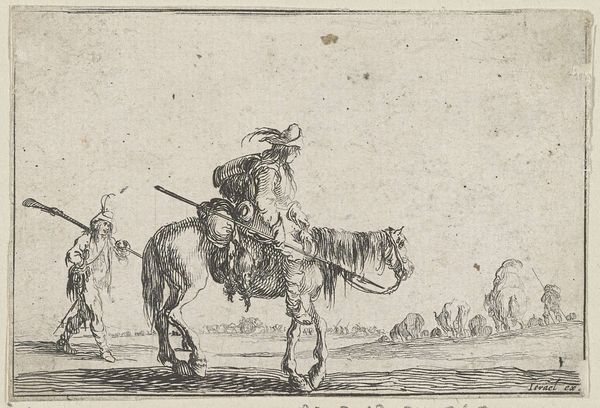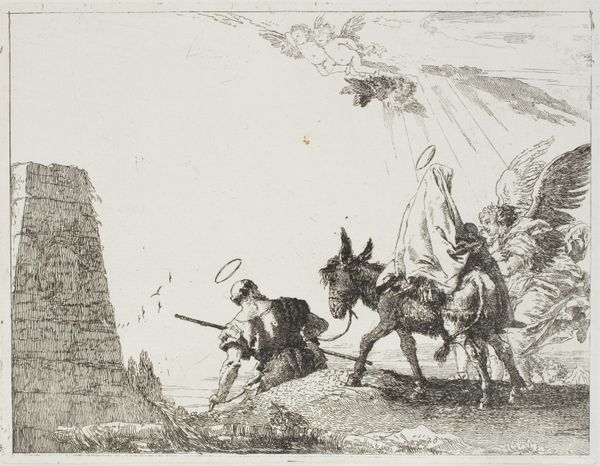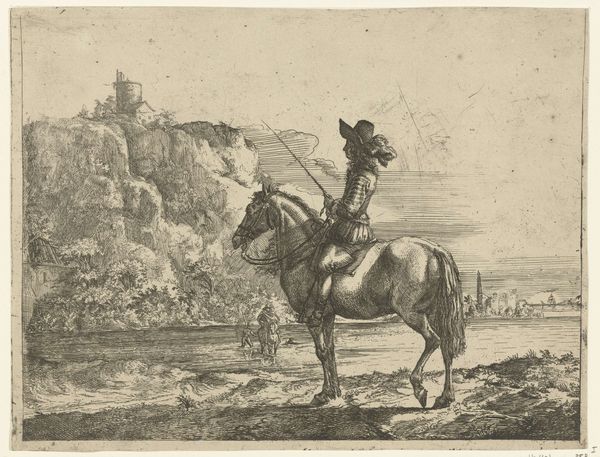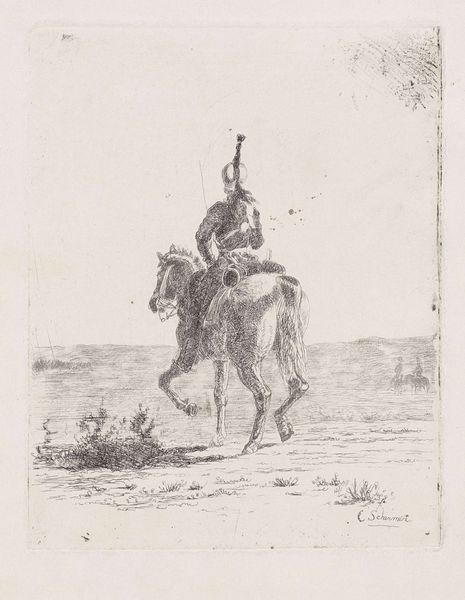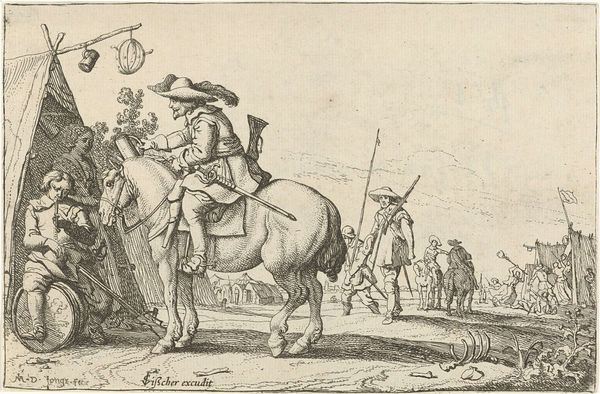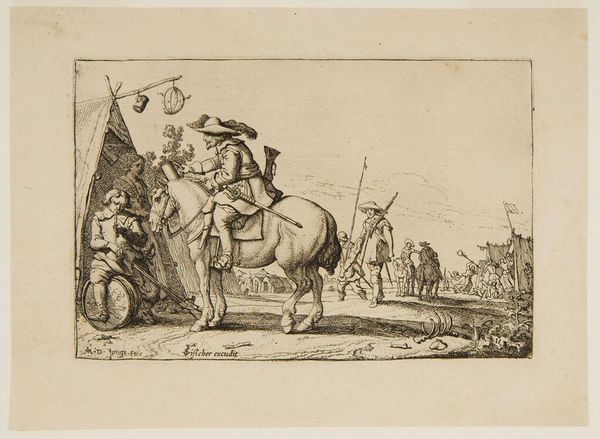
print, etching
#
dutch-golden-age
# print
#
etching
#
landscape
#
figuration
#
genre-painting
Dimensions: height 125 mm, width 136 mm
Copyright: Rijks Museum: Open Domain
This image, "Twee ruiters" or "Two Riders" was made by Pieter Cornelisz. Verbeeck sometime in the first half of the 17th century, using etching. Etching involves coating a metal plate with a waxy, acid-resistant material, drawing an image into the wax, and then dipping the plate in acid. The acid bites into the metal where the wax has been removed, creating lines. These lines are then inked, and the plate is used to print an image onto paper. In this print, the lines create a sense of depth and texture, delineating the riders and their horses. The figures convey a narrative scene, with the etching technique providing a sense of immediacy. The controlled, precise marks suggest a meticulous process, reflecting the skilled labor involved in printmaking during the Dutch Golden Age, when printmaking was critical to disseminating information and artistic ideas across Europe. It’s a reminder that every print is the product of skilled labor.
Comments
No comments
Be the first to comment and join the conversation on the ultimate creative platform.
